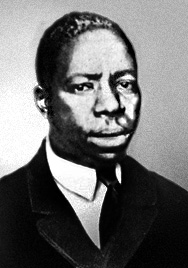George Watson (Medal of Honor) facts for kids
Quick facts for kids
George Watson
|
|
|---|---|
 |
|
| Born | March 24, 1914 Laurel, Mississippi |
| Died | March 8, 1943 (aged 28–29) SS 's Jacob, Porlock Bay, New Guinea |
| Place of burial |
at sea
|
| Allegiance | United States of America |
| Service/ |
United States Army |
| Years of service | 1942–1943 |
| Rank | Private |
| Unit | 2nd Battalion, 29th Quartermaster Regiment L&B |
| Battles/wars | World War II |
| Awards | Medal of Honor Purple Heart |
George Watson (born March 24, 1914 – died March 8, 1943) was a brave soldier in the United States Army. He gave his life to save other soldiers from drowning during World War II.
In 1997, he was given the Medal of Honor. This is the highest award a soldier can receive for being very brave. He earned it for his actions on March 8, 1943, near Porlock Harbor, New Guinea.
George Watson and six other Black American soldiers from World War II received the Medal of Honor on January 12, 1997. President Bill Clinton gave the award to Watson's family on January 13, 1997. This happened at a special ceremony at the White House in Washington, D.C. These seven men were the first and only Black Americans to get the Medal of Honor for their service in World War II.
Contents
George Watson's Life Story
George Watson was born in Laurel, Mississippi. Later, his family moved to Birmingham, Alabama. He went to college at Colorado A&M, which is now Colorado State University. He finished his studies in 1942. Watson was married and had one daughter.
He joined the U.S. Army on September 1, 1942. After his basic training, he was sent to different places. Then, he sailed on a ship called the USS Hermitage to the Pacific Ocean area where the war was happening. He worked as a bath and laundry specialist in the 2nd Battalion, 29th Quartermaster Regiment. In January 1943, he boarded another ship, the 's Jacob, which was a Dutch ship used by the U.S. Army.
Heroic Actions During World War II
On March 8, 1943, the Army ship Jacob was near Porlock Harbor, New Guinea. Suddenly, nine Japanese bomber planes attacked it. The planes hit the Jacob three times, causing a big fire. The fire could not be put out, so everyone was told to leave the ship.
After people started jumping into the water, Watson stayed behind. Instead of trying to save himself, he helped soldiers who could not swim. He guided them to life rafts. Because he used so much energy helping others, he became very weak. The sinking ship pulled him down into the water, and he drowned.
Another ship, a minesweeper called HMAS Bendigo, was nearby. It rescued 158 men from the water. Sadly, George Watson's body was never found.
Awards and Recognition
On June 13, 1943, George Watson was given the Distinguished Service Cross (DSC). This was the Army's second-highest award for bravery. He was the first Black American soldier in World War II to receive this honor.
In the early 1990s, people realized that Black soldiers might not have been fairly considered for the Medal of Honor during World War II. In 1993, the U.S. Army asked Shaw University to study this. The study found that there was unfair treatment because of race when giving out awards during the war.
After a lot of research, the study suggested in 1996 that ten Black Americans from World War II should get the Medal of Honor. That same year, Congress passed a law allowing President Clinton to give these awards. Seven of the ten soldiers, including Private Watson, were approved. Their Distinguished Service Crosses were changed to the Medal of Honor.
On January 13, 1997, President Clinton presented the Medal of Honor to the seven Black American soldiers. Private Watson and five others received the award after they had died. Sergeant Major of the Army, Gene C. McKinney, accepted the Medal of Honor for Private Watson during the ceremony. Only one of the soldiers, Vernon Baker, was still alive to receive his medal.
George Watson's Medal of Honor is now on display at the U.S. Army Quartermaster Museum in Fort Lee, Virginia.
Several places and things have been named to honor George Watson. This includes a field at Fort Benning, Georgia. In 1997, a United States Navy ship, the USNS Watson (T-AKR-310), was also named after him. This ship is the first of its kind, designed to carry large amounts of military equipment.
Watson is remembered at the Walls of the Missing, which is part of the Manila American Cemetery in Taguig, Philippines.
Military Awards and Medals
Here are the awards and medals George Watson received:
| Medal of Honor | Purple Heart | Army Good Conduct Medal |
| American Campaign Medal | European-African-Middle Eastern Campaign Medal with one bronze star | World War II Victory Medal |
Images for kids
See also



